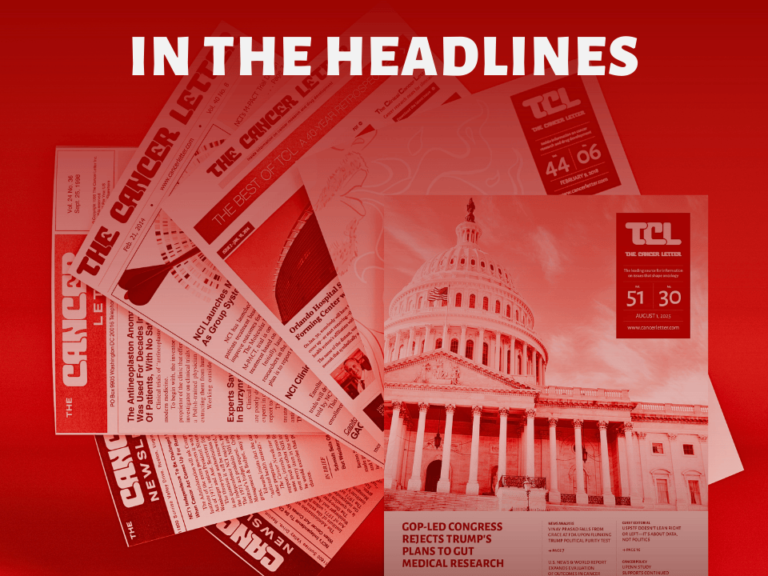The FDA Oncologic Drugs Advisory Committee May 24 voted 12-4 to recommend approval of neratinib for the extended adjuvant treatment of adult patients with early-stage ERBB2-positive breast cancer who have received prior adjuvant trastuzumab-based therapy.
The drug, which has the trade name Nerlynx, is sponsored by Puma Biotechnology Inc.
Neratinib is a kinase inhibitor that irreversibly binds to epidermal growth factor receptors, Human Epidermal Growth Factor Receptor 2, and HER4.
FDA hasn’t been consulting ODAC except in cases where applications present vexing problems. In this case, the drug’s history—transfer of ownership from Wyeth to Pfizer to Puma as well as multiple protocol revisions—made it difficult to measure the magnitude of treatment benefit.
There are currently no approved therapies which improve upon the benefits of trastuzumab for HER2-positive patients in the adjuvant setting.
FDA appears to have taken steps to run statistical analyses to demonstrate that the drug, in fact, appeared to convey a benefit of some uncertain magnitude, and ODAC, for its part, overwhelmingly accepted this notion.
ODAC also accepted the company’s approach to overcoming the agent’s most significant toxicity—grade 3 diarrhea. The company argued that it sets in early and can be managed through pre-treatment.
Brian Rini, ODAC acting chair and an oncologist at the Department of Hematology and Medical Oncology Cleveland Clinic Taussig Cancer Institute Glickman Urological and Kidney Institute, said the drug appeared to show modest activity and a manageable toxicity profile.
“I think what we heard was that there were the concerns about toxicity—specifically diarrhea,” Rini said. “I think the sponsor provided some compelling data about toxicity being relatively relatively manageable, and short-lived. As I say to all my patients, you give your consent every time you get your treatment. So, you can stop, and the toxicity goes away.
“There is concern by the group—and I share that—that there is a relatively modest effect here, although it’s within the range of other drugs in the adjuvant setting,” Rini said at the meeting. “And I think to me the most compelling was just the consistency both within and across analyses by the sponsor and FDA that this small benefit was real and potentially durable.
“Although, noting the toxicity, the number of people to treat in order to prevent one recurrence could be quite high. We weren’t given that number, but it would be quite high.
There is concern by the group—and I share that—that there is a relatively modest effect here, although it’s within the range of other drugs in the adjuvant setting. And I think to me the most compelling was just the consistency both within and across analyses by the sponsor and FDA that this small benefit was real and potentially durable.
“And then I think the most consistent concern from everyone—and I hear it—is about the label being too broad. I hear that loud and clear. But I think there was a small, durable benefit, and that’s why I voted yes.”
In the company’s registration trial, 2,840 women with early stage HER2-positive breast cancer who had previously received adjuvant treatment with trastuzumab were randomized 1:1 to receive either neratinib (n=1420) or placebo (n=1420).
The primary endpoint was invasive disease-free survival (iDFS) within 2 years and 28 days.
The primary analysis demonstrated a statistically significant stratified hazard ratio of 0.66 (0.49, 0.90) observed with an estimated 2.3% absolute difference in iDFS at two years (94.2% on the neratinib arm vs. 91.9% on the placebo arm).
The sponsor and FDA noted that there may be a difference in the magnitude of benefit based on hormone receptor status [HR-positive HR=0.49 (0.31, 0.75), HR-negative HR=0.93 (0.60, 1.43)]. However, this is an exploratory subgroup analysis.
As the agent bounced from sponsor to sponsor, major amendments to the protocol included:
Study population enriched with high-risk patients
Study follow-up time shortened from 5 years to 2 years; analysis changed from event-driven to time-driven
Reconsent process introduced to extend follow-up to 5 years post randomization.
Though FDA clearly didn’t encourage Puma to submit the application, the agency tried to present an even-handed case.
The agency’s sensitivity and tipping point analyses appeared to show that the statistical issues identified were unlikely to have a large impact on the study’s overall results.
“There remains some uncertainty regarding the true magnitude of the treatment effect since the primary analysis (truncated at 2-years follow-up) observed a hazard ratio of 0.66 (95% CI: 0.49, 0.90) which changed to 0.68 (95% CI: 0.51, 0.91) with the exploratory updated 2-year analysis and the exploratory 5-year analysis observed a hazard ratio of 0.73 (95% CI: 0.57, 0.92),” the FDA analysis states.












